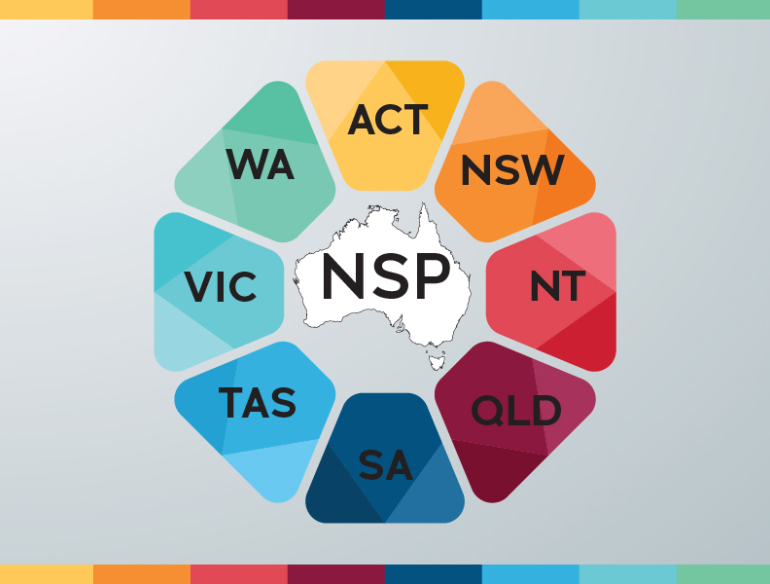Needle and syringe programs (NSPs) are a key component of current and previous National Strategies for reducing blood-borne viral infections. The aims of the National Strategies are to reduce the transmission of HIV, hepatitis B and hepatitis C and to reduce associated morbidity, mortality and personal and social impacts. Each National Strategy outlines a set of indicators for monitoring progress towards these aims and reporting against the indicators through the National Surveillance and Monitoring Plan is a key step in the implementation process.
The NSP National Minimum Data Collection (NSP NMDC) provides key data on NSP service provision to enable reporting against key NSP indicators outlined in the National Surveillance and Monitoring Plan.
Following a meeting with key stakeholders in 2015, the NSP NMDC identified and agreed on annual collection and collation of data in relation to three broad areas of NSP operations:
- Agency-level administrative data (NSP service type and location)
- Client-level data (demographic characteristics of NSP attendees [age, gender and Indigenous status], drugs injected by NSP attendees and health education interventions and referrals provided)
- National needle and syringe distribution.
The inaugural NSP NMDC National Data Report was published in 2016 with subsequent reports published annually.
The NSDP NMDC project provides key indicators to enable monitoring and evaluation of the impacts of Australia’s National HIV and Hepatitis C Strategies, as well as reporting against WHO HCV elimination goals and UNAIDS Global AIDS Response.
ACT Government, ACT Health; Australian Injecting and Illicit Drug Users League (AIVL); Australian Institute of Health and Welfare; Government of South Australia, SA Health; Government of Western Australia, Department of Health; Harm Reduction Victoria (HRVic); National Drug and Alcohol Research Centre; Northern Territory Government, NT Health; NSW Government, NSW Health; NSW Users and AIDS Association (NUAA); Pharmacy Guild of Australia; Queensland Government, Queensland Health; Tasmanian Government, Department of Health; Victorian Government, Department of Health
Australian Government Department of Health and Aged Care


